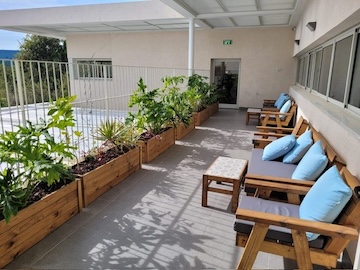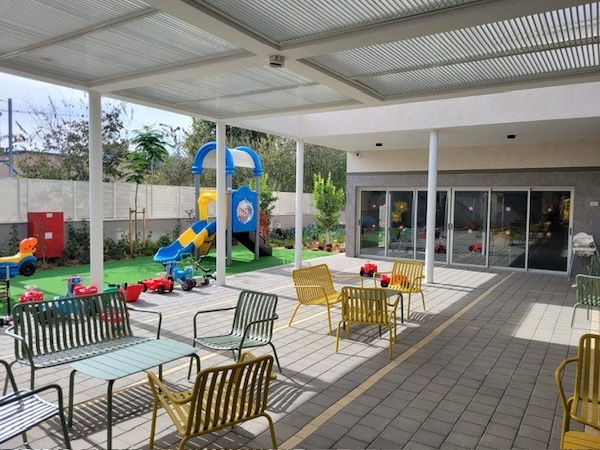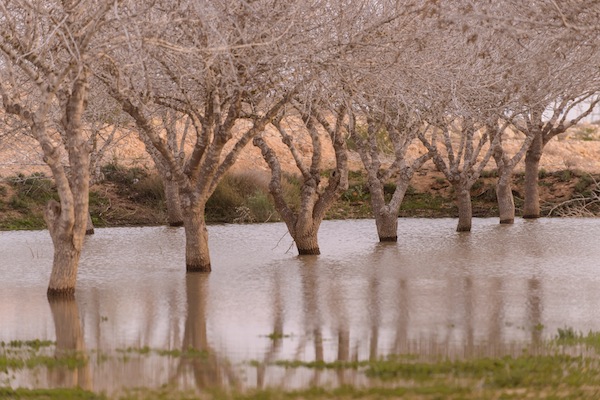Western Canada House, a shelter for women and children escaping domestic violence, is now open in Rishon LeZion, near Tel Aviv. The project is a result of support from Jewish National Fund of Canada supporters in Vancouver and Winnipeg. (photo from JNF Pacific Region)
Western Canada House, a shelter for women and children escaping domestic violence, is now open in Rishon LeZion, near Tel Aviv. The project, a result of support from Jewish National Fund of Canada supporters in Vancouver and Winnipeg, provides a temporary home to families in crisis, as well as access to counseling services, programs for mothers to become self-supporting and assistance in finding permanent, secure housing.
The project was made possible by revenue from 2016 Negev Dinners in Vancouver and Winnipeg and was chosen by that year’s Vancouver dinner honouree, Shirley Barnett. The honouree of the Winnipeg dinner was Peter Leipsic. (An additional Vancouver connection is that Leipsic is the father of Dr. Jonathon Leipsic, who is, among many other things, a leader in the Jewish Federation of Greater Vancouver.)
Barnett said she was motivated to choose the project in part because it is a joint initiative with No2Violence, whose founder, Ruth Rasnic, Barnett had met previously. Rasnic, who was awarded the Israel Prize in 2009 for her life’s work, founded No2Violence in 1977, to enable women and children suffering from domestic violence to break away and start a new life – by providing them with shelter, professional help, vocational training and legal aid – as well as to raise awareness about domestic violence. The group now operates three shelters in Israel.
“When I was honoured by the JNF, they asked me what kind of a project I would like the proceeds to go to,” Barnett recalled. The agency provided a number of options and, based on her background in social work and her familiarity with Rasnic’s work, she chose this one.
“No2Violence is interesting,” Barnett said. “They are not a religious organization. There are other shelters in Israel that cater only to the Orthodox. No2Violence is nonsectarian and, in addition to that, it is open to women who are not Jewish. It is also open to women who do not have legal status in Israel, who have not been deported because their children have been born in Israel. So, their doors are open to women who have come from Sudan, women who have come from Russia, who have been trafficked into Israel by their Israeli boyfriends. That was also attractive to me.”

Rabbi David Bluman, director of youth engagement at Congregation Beth Israel, visited Western Canada House earlier this month as part of a joint mission to Israel by Beth Israel, JNF Canada and Congregation Har El.
“It’s a beautiful place,” Bluman said. “They have different areas for children to play. They have a communal kitchen where each family signs up at a different time to do the cooking for the group that’s there. It’s obvious that JNF Western Canada did a really good job, put a lot of money in to build that place. It’s beautiful.
“I don’t think anyone wants to be there, they need to be there,” said the rabbi. “JNF Canada has made it as welcoming as possible, making it so it’s like home for them while they are there.”
The shelter has capacity for 10 to 12 families, providing needed refuge in a country where, statistics indicate, as many as 70% of women and children experiencing domestic abuse cannot access alternative housing.
Michael Sachs, Pacific region executive director of JNF, visited the project last year to assess progress and is delighted that the shelter is now open and providing housing to families. There were delays in completion of the initiative, Sachs said, because of municipal bureaucracy.


